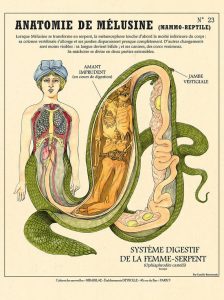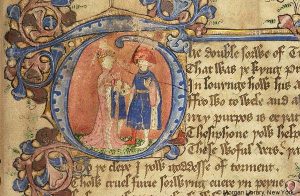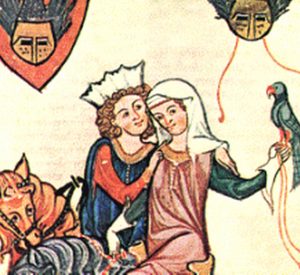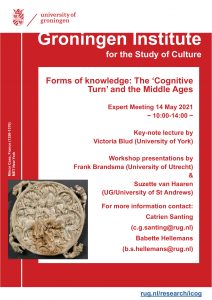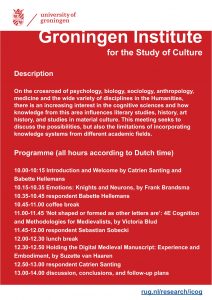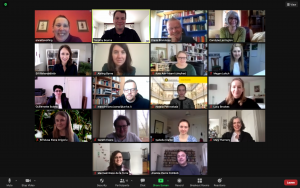The project’s postdoctoral researcher from September 2019 to August 2021, Timothy Bourns, is continuing and expanding his work on emotions and the environment this year on the west coast of Canada. Tim has joined the Department of English Language and Literatures at the University of British Columbia as an SSHRC Postdoctoral Fellow. His project is titled ‘The Nature of Emotion in Medieval Romance’, his research mentor is Professor Robert Rouse, and he is engaging with the Oecologies ‘Inhabiting Premodern Worlds’ research cluster and the Emotion & Self Psychology Lab. He will also remain connected with the Emotion and the Medieval Self project as a gestafræðimaður (visiting research fellow) at the University of Iceland’s Institute of Literature and Visual Arts.
Author: Timothy Bourns
Meri and Tim speak on ‘Emotional Selves’
The project’s doctoral student, Meritxell Risco de la Torre, and postdoctoral researcher, Timothy Bourns, were both in attendance at the White Rose 2021 Medieval Graduate Conference. The event was held online on June 17th and 18th and was hosted by the University of York and University of Leeds; the conference theme was ‘Self and Selves’, and Meri and Tim presented their research in the panel ‘Emotional Selves’. Further information about the event, including the full programme, can be found here.
Meri’s paper was titled ‘Serpentine Tears into the Sky: Selfhood, Emotionality, and the Metamorphosing Body in Le Roman de Mélusine’, and here’s the abstract:
Mélusine, as the founding mother of the house of Lusignan, has a peculiar origin story. Cursed by her fairy mother at a young age, she is forced to transform her body into a half-serpent guise every Saturday. When that monstrous bodily transformation is discovered by her own husband, Raymondin, and subsequently known by her court, the half-fairy woman flies into the sky completely transformed into a flying serpent. While her bodily transformation seems definitive, her wailing and crying into the sky is described by the narrator, and perceived by the internal audience, as the voice of a woman. The connection between body and selfhood through the representation of emotions in the story of Mélusine resonates with a contemporary audience: while the body of Mélusine changes, her humanity remains untouched, allowing her to cry human-like tears into the sky of her lands. The transformation of her body does not seem to affect the existence of her selfhood, but only the social perception of it. This paper argues that the metamorphoses of Mélusine’s body and the representation of her human-like emotional expression through wailing and tears confirms the existence of a stable, yet malleable, selfhood in the character. The previously deemed human self of Mélusine is only affected in the eyes of the society that surrounds her thanks to the visible transformation of her body, as it directly alters the (self)narrative created around her. Mélusine is, in essence, still herself, although her body has changed. Through the analysis of the changing body of Mélusine in the original romance by Jean d’Arras and the other versions of it, this paper will try and shed light on the reasons of this interest in her humanity and her selfhood through an analysis of the correlation between body, self, and emotion.
Tim’s paper was titled ‘Affective Force and Material Selfhood: The Brooches of Troilus and Criseyde’, and here’s the abstract:
Geoffrey Chaucer’s Troilus and Criseyde is one of the most powerful meditations on the nature of human love in the history of English literature. By focusing on the brooches exchanged by Criseyde and Troilus, I will argue that inorganic objects serve an important affective function within this narrative by operating as a material extension of the self.
During their first night of passionate embrace, Criseyde gifts Troilus with a brooch inset with a heart-shaped ruby, metonymically signifying her feelings for him. When the two lovers later part at the gates of Troy, Troilus gives Criseyde a tear-soaked brooch, demonstrating his sadness and ongoing affection. As her feelings shift following their separation, Criseyde passes this object on to her next lover, Diomede. When Diomede’s captured tunic is paraded in the streets of Troy, Troilus inspects the garment and his heart turns cold when he recognizes the brooch.
These objects signal the true feelings of key characters as they move from one lover to the next, with significant narrative impact and emotional consequences. The second brooch performs a communicative function, informing Troilus – and the reader – of Criseyde’s change of heart. It also produces emotional effects in Troilus; his heartbreaking discovery moves him from love to sorrow to anger. This public display of Criseyde’s changed intentions further establishes her narrative selfhood and ultimate rejection of her uncle Pandarus’ sexual machinations, in which Troilus was complicit.
Removing the traditionally anthropocentric lens of the affective turn by integrating an object-oriented approach, this article will carve new territory between emotion studies and new materialisms. Within a Chaucerian context, it offers insight into the affective force of objects and how the material can symbolically extend the self, as physical gifts bring people together – or drive them apart.
New Project Publication: ‘Poetic Sensorium and Aesthetic Objectification in the Middle English Pearl’
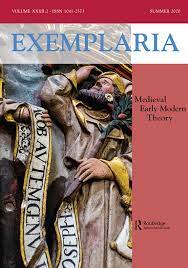 Our project’s Principal Investigator, Professor Sif Ríkharðsdóttir, has published the article ‘Poetic Sensorium and Aesthetic Objectification in the Middle English Pearl’ in Exemplaria 32.4 (2020). The article is available online here.
Our project’s Principal Investigator, Professor Sif Ríkharðsdóttir, has published the article ‘Poetic Sensorium and Aesthetic Objectification in the Middle English Pearl’ in Exemplaria 32.4 (2020). The article is available online here.
Abstract: This article considers the ways in which sensory perception underlies the aesthetic appreciation of the Middle English Pearl. In particular it focuses on how sensory description and perception is used to interlink the different aspects of the poem’s representational properties, such as its form, its thematic content, and the narrative medium, to engage the audience. The article therefore addresses the intricate correlation between the poetic form of Pearl and the function of sensory perception within the poem as means of mediating between the external audience and what might be termed the internal poetic sensorium. Sensorium is here conceived as the entirety of the sensory realm of an individual, including the external objects, sounds or smells along with perceived sensations, perception and the cognitive processes associated with deciphering and processing the sensorial input. Poetic sensorium instead refers to the fictive description of a sensory realm and experiences that are actualized and materialized via the process of reading or listening. In the article it is argued that the haptic sense is the fulcrum on which much of the poetry turns, revealing the underlying implications of the poem’s function as a memorializing artifact.
Chloé Vondenhoff’s upcoming PhD defence: emotions, translations, and the Knight of the Lion
Chloé Vondenhoff – a PhD candidate in Comparative Literature at Utrecht University and the University of Iceland – will have her PhD defence this Friday, June 11th. Her research examines the translation and/or adaptation of emotive literary representation within Arthurian romance, with a focus on Yvain, the Knight of the Lion in its various cultural contexts. More can be read about her thesis and research here. We wish Chloé all the best with her defence!
Emotion and Identity Workshop in Düsseldorf
Miriam Edlich-Muth and Lucie Kaempfer – who both attended our project’s first workshop in Utrecht – are organising an exciting and excellent-looking workshop, entitled ‘Modelling Emotion/Modelling Identity in Late Medieval Literature’. The event is hosted by the Department of Medieval English Literature and Historical Linguistics at HHU Düsseldorf, Germany, on the 6th of September (they hope in person!). The workshop will take the form of a roundtable discussion, focused on primary text extracts submitted by participants, and it will question how the literary expression and depiction of emotion replicates or calls into question fixed categories of social identity: class, age, gender, religion, place, (dis)ability, and sexuality. Further information about the event can be found here.
‘Knights and Neurons’ in Groningen
Sif Ríkharðsdóttir speaks at the University of Gothenburg
The project PI, Professor Sif Ríkharðsdóttir, was invited to present at Göteborgs universitet (The University of Gothenburg) on 22 April, 2021. Her lecture, held online, addressed the medieval concept of pain and its various manifestations in Old Norse literature (titled ‘Pain, Love and the Embodiment of Emotion in Old Norse Literature’). Amongst other things, it considered the relationship between pain and ideological values, the physiological and psycho-somatic dimensions of pain and, ultimately, the function of pain as an emotion. In the lecture, Sif further suggested that pain in Old Norse literature is intimately interlinked with the notion of interior emotionality and its physical manifestation, i.e. the self – its emotive potentiality and its embodiment. Additional information about the lecture can be found here.
PI Sif Ríkharðsdóttir returns to the airwaves
Eco-Emotive Metaphor: Cultural Models for Emotions Workshop
On April 8th, the project’s Postdoctoral Researcher, Timothy Bourns, attended another workshop on medieval emotions: the Contributors Workshop for the volume Cultural Models for Emotions in the North Atlantic Vernaculars, 700-1400. The event was hosted by the University of Castilla La Mancha and will lead to a published volume with Brepols, edited by Professor Javier Díaz Vera, Dr Teodoro Manrique Antón, and Dr Edel Porter.
Timothy’s chapter is titled ‘Blood, Rain, and Tears: Eco-Emotive Metaphor in the Medieval North’. It examines the figurative relationship between emotion and the environment in Old Norse tradition, drawing on comparative material in Latin, English, Irish, and Saxon, with a focus on crying and fluids. These eco-emotive metaphors combine a somatic marker with an environmental feature, simultaneously revealing the depth and nature of an emotional gesture as well as the symbolic associations of various natural phenomena. The chapter will thus argue that the fluids of the living body and the natural environment form a figurative, affective, symbiotic relationship in the related emotive scripts of the medieval North.
Workshop II (St John’s College, Oxford)
On March 25th and 26th, we held our second Emotion and the Medieval Self in Northern Europe workshop, hosted by St John’s College, University of Oxford. This meeting was initially meant to take place in March 2020 and was then postponed to September 2020 and then again to March 2021. Finally, we held the workshop online, via Zoom, and it was immensely productive, energising, and successful!
On the first afternoon, Carolyne Larrington opened the workshop and led a round of general introductions, Sif Ríkharðsdóttir introduced and outlined the wider project, and Timothy Bourns discussed the project’s key terms and working definitions. Following a short break, we turned to the texts themselves; participants were asked to share a passage in advance which they then presented for group discussion. Textual discussions were divided into three sections: French, Celtic, and English (Norse, Dutch, and German were explored at our first workshop in Utrecht in November, 2019). In the opening French Session, we explored passages from Chrétien de Troyes’s Le Chevalier de la Charrette (introduced by Anatole Fuksas, Cassino and Southern Latium), the Carlisle fragment of Thomas d’Angleterre’s Le Roman de Tristan (Brindusa Grigoriu, Alexandru Ioan Cuza), and the non-cyclic Lancelot do Lac (Guillemette Bolens, Geneva). After a concluding discussion, we ended the afternoon with an afternoon social, featuring breakout rooms and a drink of choice!
We began the second day with the Celtic Session – romances in Irish, Scots, and Welsh. More specifically, we examined passages from Eachtra Uilliam (shared by Aisling Byrne, Reading), Hary’s The Wallace (Kate Ash-Irisarri, Bristol), and Ystoria Gereint uab Erbin, especially in conversation with Chrétien’s Erec et Enide (Natalia Petrovskaia, Utrecht). Following a concluding discussion of these passages, a break with breakout rooms, and a lunch break, we began the afternoon with the English Session: Geoffrey Chaucer’s The Wife of Bath’s Tale (Mary Flannery, Bern) and The King of Tars (Lucy Brookes, Oxford). After concluding our discussion of the English passages and another break with breakout rooms, we heard comments and feedback on the project and the workshop from Annette Volfing (Oxford) and had a fruitful concluding discussion about emotions and selfhood in medieval literature. We ended the day with another afternoon social, where we all decided to stay together in one room, where the good conversation and formation of new friendships continued.
We sincerely thank all of the participants for an incredibly instructive, engaging, and enjoyable workshop “in Oxford”, and we hope to stay in touch and see each other in person before long!


